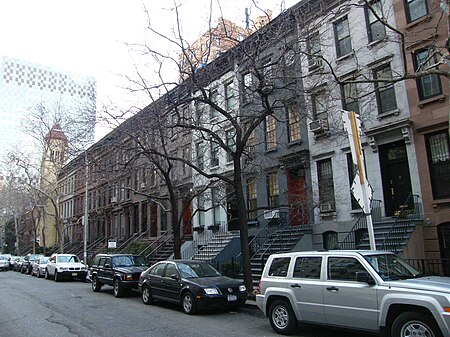The New York Blood Center (NYBC) is a community, nonprofit blood bank based in New York City. Established in 1964 by Dr. Aaron Kellner, NYBC supplies blood to approximately 200 hospitals in the Northeast United States. NYBC and its operating divisions also provide transfusion-related medical services to over 500 hospitals nationally.
NYBC, along with its operating divisions Community Blood Center of Kansas City, Missouri (CBC), Innovative Blood Resources (IBR), Blood Bank of Delmarva (BBD), and Rhode Island Blood Center (RIBC), collect approximately 4,000 units of blood products each day and serve local communities of more than 75 million people in the Tri-State area (NY, NJ, CT), Mid Atlantic area (PA, DE, MD, VA), Missouri and Kansas, Minnesota, Nebraska, Rhode Island, and Southern New England.
In addition to serving the New York City metropolitan area, New Jersey, Connecticut and Pennsylvania, in May 2014, NYBC merged its operations with Community Blood Center of Greater Kansas City (CBC). In February 2016, NYBC and CBC announced the creation of the Kansas City-based National Center for Blood Group Genomics, a new laboratory that will focus on precision testing of blood donor samples.NYBC maintains close relationships with both New York City's Police Department (NYPD) and Fire Department (FDNY). Among NYBC's largest donor groups is the NYPD, which donated more than 11,000 pints of blood through November 2015. At the same time, the FDNY participates with NYBC in the "Be The Match Program" operated by the National Marrow Donor Program (NMDP). More than 8,000 FDNY members are on the potential donor list, and 179 members have already given this life saving gift to those in need. FDNY members represent more than 10% of all NYBC bone marrow donors. Each year, at an annual induction ceremony hosted by FDNY and NYBC at FDNY headquarters, donors and their recipients meet for the first time. In 2016, Firefighter Mike Wilson was introduced to a recipient from Erie, Pennsylvania, who received his lifesaving bone marrow to treat her acute myeloid leukemia (AML), while Firefighter Frank Perdue met a recipient diagnosed with essential thrombocythemia, a rare chronic blood disorder. In 2015, firefighter Michael McCauley of Staten Island met his recipient, a United States Marine Sergeant who saw combat in Iraq, and who was subsequently diagnosed with acute myeloid leukemia (AML). Through FDNY’s participation in NYBC’s program, McCauley’s bone marrow is credited with saving the recipient's life.NYBC houses Lindsley F. Kimball Research Institute and the Howard P. Milstein National Cord Blood Center, a public cord blood bank named after board member Howard Milstein. The National Cord Blood Program (NCBP), directed by Dr. Pablo Rubinstein, is the oldest and largest in the world. In August 2015, the NCBP announced a new collaboration with the University of California, Davis Health System to manufacture specialized lines of highly adaptable stem cells for potential new therapies for diseases that include anemia, leukemia, lymphoma, sickle cell disease and severe combined immunodeficiency.The Lindsley F. Kimball Research Institute (LFKRI) has been awarded grants to conduct research in such areas as epidemiology and the development of HIV self-testing interventions, cellular therapy and transfusion medicine, in vitro platelet production, blood genomics, immunology, the development of infectious disease screening techniques and preventions for diseases like severe acute respiratory syndrome, Hepatitis B and Hepatitis C.







